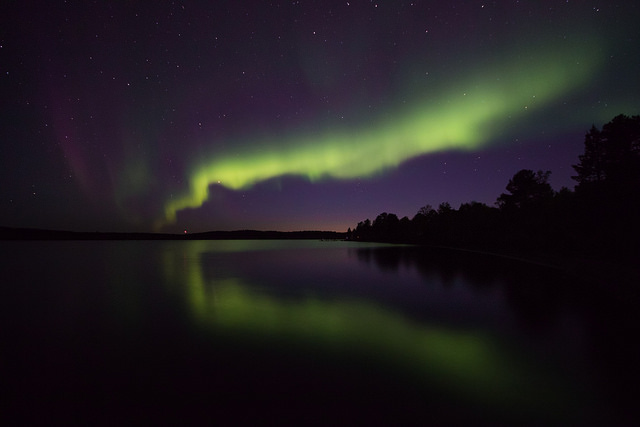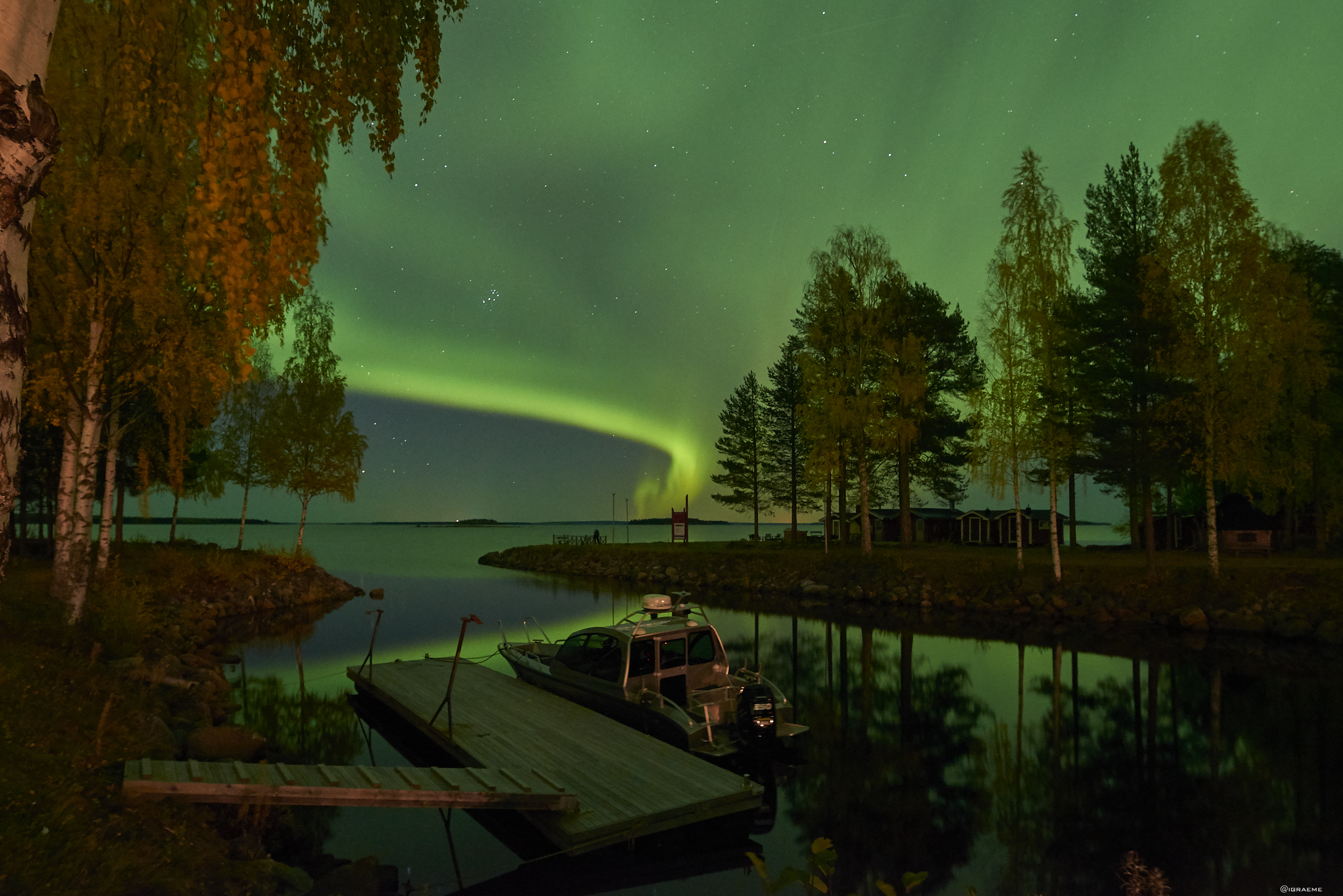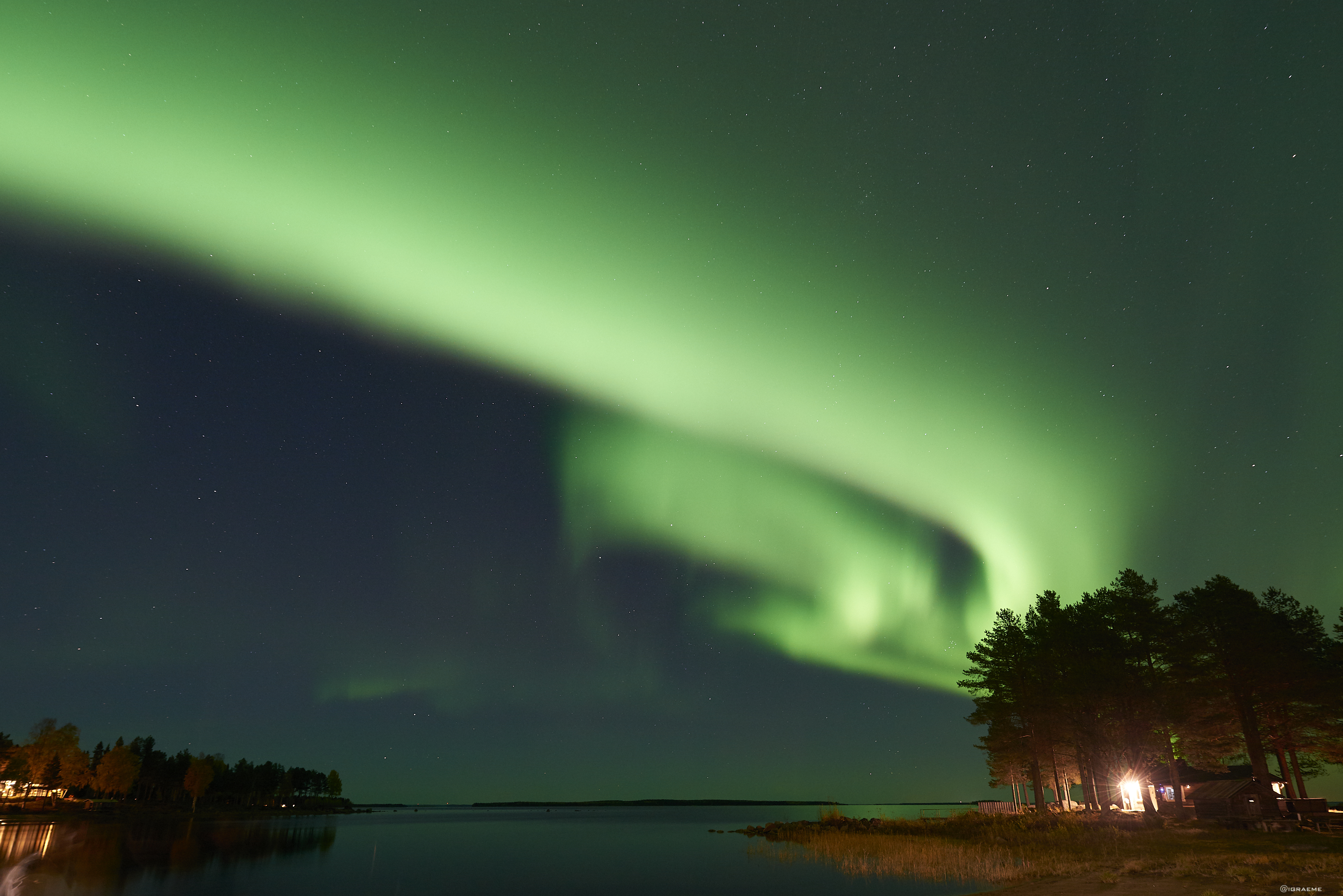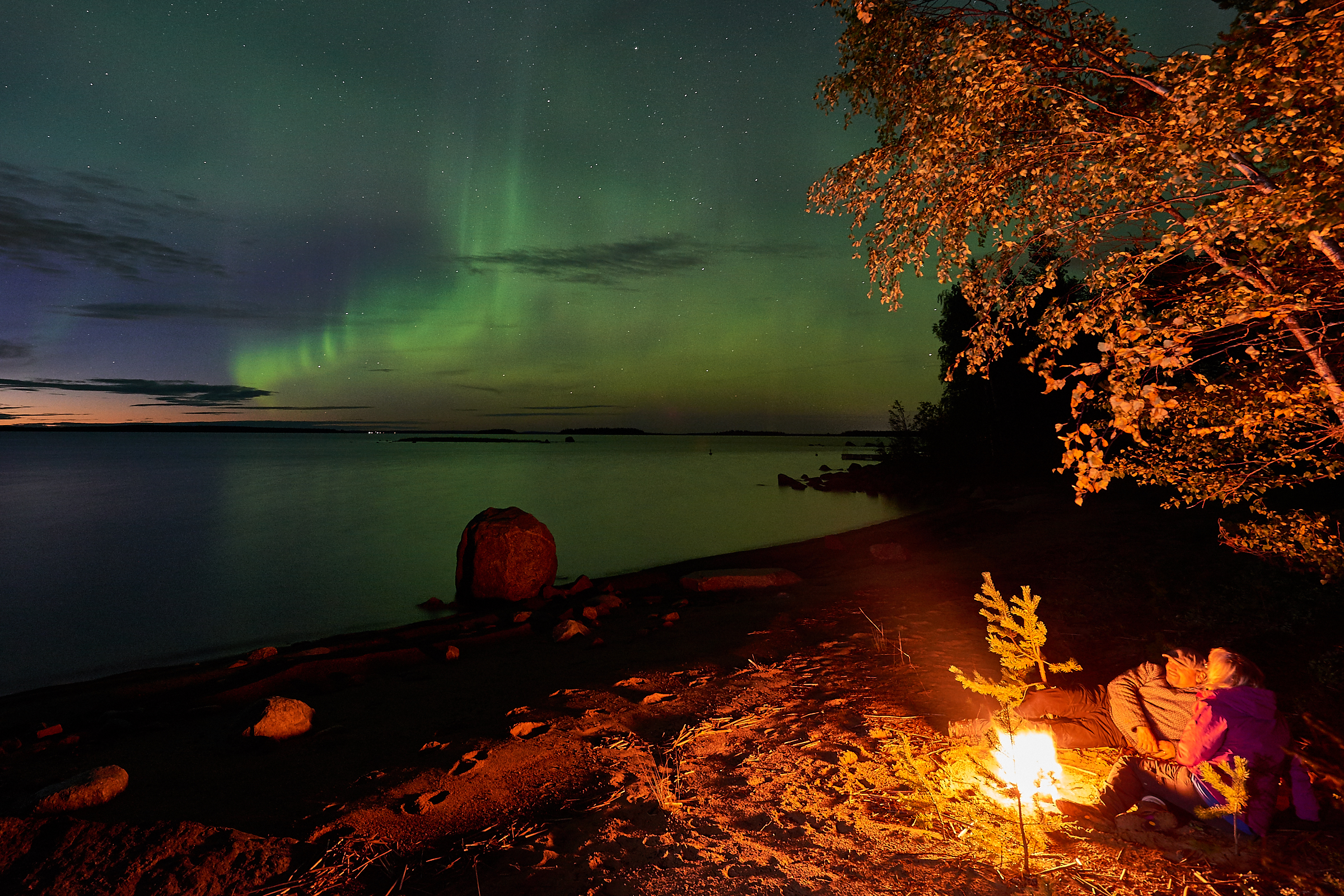Discover why Autumn is one of the best times to see the Northern Lights in Scandinavia!
When it comes to chasing the Northern Lights in Autumn, only a few realise just how magical this season can be in Northern Scandinavia. While the Aurora Borealis is visible from Finland, Sweden, Norway and Iceland all year round, it can be hidden in the brightness of summer. That’s why we’re here to highlight why Autumn Aurora holidays should be on your radar.
As summer fades and the skies darken, Aurora hunters in the Arctic eagerly await the return of the night, and Autumn delivers just that. With crisp air, reflective lakes and an array of autumnal colours across forests and fjords, the Northern Lights in Autumn can be a breathtaking experience. Add in the fact of fewer crowds and warmer temperatures than winter, and you’ve got an ideal setting for your Aurora adventure.

While snow-based activities are limited in Autumn, there’s no shortage of incredible experiences:
Autumn also allows for daytime adventures in milder conditions, perfect for those who want to explore without bundling up in heavy winter clothing.
There’s more than beauty behind Autumn’s magic, there’s science.
Autumn isn’t just about crisp air and golden leaves, it’s the perfect backdrop for nature’s most dazzling light show.
As the nights grow longer and skies turn clearer, the conditions for spotting the Northern Lights reach their peak.
Autumn’s unique blend of solar activity and Earth’s magnetic alignment sets the stage for some of the most vivid aurora displays of the year. September and October, in particular, offer a sweet spot! Dark enough for visibility, yet not as cold as deep winter.
Whether you’re chasing the lights in the Arctic Circle or cosying up under starry skies, Autumn gives you front-row seats to one of Earth’s most breathtaking natural wonders.
Discover the science behind the Northern Lights, here.


October offers many of the same advantages as September: darker skies, fewer tourists and potentially spectacular Aurora Borealis displays. By now, most leaves have fallen, leaving behind a moody, frosty landscape that photographers love.
With temperatures ranging from 0.8-10 degrees, October is still far milder than the depths of winter, and with lakes often still unfrozen, you might even witness the Aurora reflected in the water, doubling the magic!
We’ve crafted a collection of Autumn Northern Lights holidays to take advantage of this magical season:
Wilderness Hotel Inari, Finland
Wilderness Hotel Inari, set on Lake Inari’s shores near Inari Village and Ivalo Airport, offers modern, thoughtfully designed accommodations, exceptional dining with panoramic lake views, and innovative Northern Lights features, making it a spectacular destination for Aurora hunting in the heart of Sámi culture.
Brändön Lodge – Autumn Auroras in Swedish Lapland
Brändön Lodge, located on the stunning shores of the Bay of Bothnia, offers excellent Northern Lights viewing with minimal light pollution, alongside activities like Aurora hikes, a visit to UNESCO-listed Gammelstad Church Village, and Nordic wilderness skills sessions.
Whether you’re a first-time visitor or a seasoned Aurora chaser, our handpicked destinations offer you the best chance to see the Northern Lights in Autumn, with added warmth, colour, and adventure.
Inspired to book your Autumn Aurora adventure?
Browse our full range of Northern Lights in Autumn trips below and start planning your unforgettable escape.
Image credits – Graeme Richardson, Timo Halonen and Korpikartano
